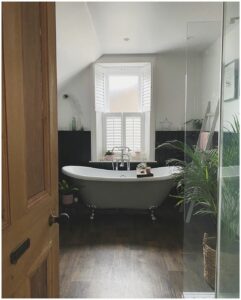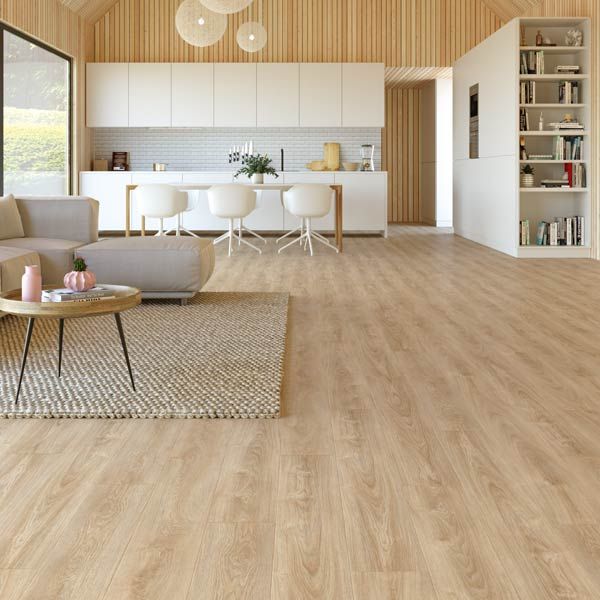Did you despair of ever getting a good night’s sleep in June 2022? You weren’t alone. According to the Met Office, 2022 was the year the UK recorded its highest ever temperature of 40.3C - and who could forget the red warnings for extreme heat, issued for the first time ever in July. As the mercury rose, and continued to do so for several agonisingly hot weeks, most of us fired up our fans and threw off the duvets in an attempt to escape the night-time heat.
What about summer 2023?
Moreover, these temperatures aren’t set to be a one-off, with the Met Office forecasting that this year will be warmer than the last one, as harbinger-of-heat, El Niño, is set to return in 2023.
What does it mean for homes?
Heatwaves can be great fun if you’re in the swimming pool - less so if you’re trying to work and sleep at home in the summer. The fact is: many homes aren’t well designed to keep up with fluctuations of the Great British Weather. During spring, there’s no better time to think about ways to keep your home cool as summer creeps closer.
Think about your flooring now
The most obvious answer is to opt for some form of air conditioning - but this can cost you a small fortune in energy bills. So if you’re looking for cost-effective ways to solve the problem of ‘why is my house so hot’- did you know that your choice of floor can help?
What are the hottest rooms in the home?
First off, it’s useful to understand the key factors that influence the heat inside the different rooms inside the house:

The way your house faces
South-facing rooms let in the most light, which can make them the warmest place to be, although east- and west- facing rooms do receive a blast of light (and heat) first thing in the morning and early evening.
Location of the room within your house
Hot air rising means that the upstairs rooms will always be hotter than the downstairs ones.
Number of windows
A room with lots of glass, such as a conservatory, will naturally let in more light than a box room with a small window, which may translate into extra heat.
Insulation
Old or inefficient loft insulation may cause your upstairs room to heat up like an oven during hot days, as there is no buffer between the roof and the rooms below.
Unsealed windows
Windows that aren’t properly sealed can be a major cause of leaks, causing hot and cold air to pass through untapped. Options to keep the hot air out in summer range from secondary glazing, insulation film/tape, blackout/insulating curtains or shades.
All this aside, there are some rooms that are nearly always the hottest:
Hell's Kitchen
No surprises here, but the appliances in your kitchen can cause it to heat up like a cook pot! Heat created by electric and gas hobs, steam from bubbling pans and ovens: without an outside air duct to extract heat, cooker fans can simply recirculate heat back into the house. This makes the kitchen a cosy place to be in winter, but during a heatwave: it’s no wonder that many of us would rather knock up a quick salad or eat al fresco than face the fire.
Baking Bedrooms
If your master bedroom is situated upstairs, then quite simply: it gets more direct exposure to the elements, which can mean that heat from the sun penetrates through the loft space and bears down into your sleeping area. Better loft insulation can help to keep your upstairs space at a more regular temperature both in winter and summer.
Humming Home Offices
Servers, computers, home entertainment systems, home cinemas… all these devices create heat, which can really be felt in small spaces, which home offices often are.
Sweaty Bathrooms
Unlike other rooms in the house, it’s usually humidity that creates that hot sweaty feeling in the bathroom. Hot showers, combined with raised body heat and heated towel rails: no wonder it can feel like a jungle in there!
Best Floors for Keeping Cool
If you’re reading this and thinking ‘what can I do to keep my house cool this summer?’, then carry on reading.
We all know that heat escapes through your floors - and in the winter, we frequently remind ourselves to shut the doors, to reduce draughts with draught-excluders, and flock to carpeted rooms in pursuit of those cosy feels.
However, all the principles that apply to reducing heat loss to stay warm can actually keep your house at a comfortable temperature all year round. Let’s investigate the best floors for keeping your house cool.
Laminate or Real Wood for Cooler Bedrooms
Wood is a conductor, meaning that it reflects heat. As a result, wood floors can help make your floor feel cooler underfoot, as well as moving air around the room to make it more comfortable overall. With proper underfloor ventilation and underlay, wood floors are great in winter, too. Always a classy choice for the bedroom, the smooth surface of real and laminate floors make it easy to zap up that bedroom dirt, dust and hair! Purists go for real wood, but laminate wood flooring will give you a similar look at a lower cost.
Perfect Parquet for a Cool Entrance or Hall
Which flooring is best for a hallway? As an area that gets a lot of foot traffic, a hardwearing and moisture-repellent floor is a must to withstand muddy football boots, pushchair wheels and dirty paws. Cooler than carpet, parquet flooring is the practice of laying small wooden tiles in a geometric pattern to create a stylish yet practical entrance. Our parquet flooring comes in an inspirational range of sizes, finishes and colours: from light frosted oak through to warm smokey grey and classic oak.
Freshen Up A Home Office with Laminate
Smaller rooms are the default home office space, often coming with the obligatory carpet from times when it served as a kids’ bedroom. Swapping carpet for laminate wood flooring can instantly make the room feel lighter and fresher, offsetting the heat from PCs and printers to create a cooler working space. Explore our wide range of laminate flooring, from spacious white grey to warm oak, all with click fitting to get that floor laid fast.
Cool Down Your Conservatory With LVT Tiles
Real stone, ceramic tiles and pantiles have a bad reputation for feeling cold underfoot but today’s equivalent, Square LVT flooring tiles, offer all the summery cooling properties without giving you frozen tootsies when it’s snowing outside. Plus, water-repellent, easy-clean tiles are infinitely more practical than carpet in a conservatory, which is often the place to wash the dog, look after plants and engage in messy arts and crafts with the kids.
Reduce Humidity In The Bathroom with Vinyl
Vinyl flooring is the best flooring material for bathrooms and here’s why: it’s long-lasting, moisture-resistant, and easy to clean. Vinyl allows you to quickly mop up those shower splashes, reducing moisture and steam that can take you from shower-fresh to shower sweaty. With over 200 floors on offer, from airy white oak to contrasting chequerboard, modern swirls and even coloured felt effect: you won’t have any trouble finding a cool floor for your bathroom.
Take The Heat Out Of The Kitchen With LVT
Kitchen LVT is a hardwearing and waterproof solution for your kitchen, mimicking the natural look of authentic stone or ceramic tiles. Unlike the real deal however, LVT doesn’t ever become extremely cold but stays at an even temperature; making it a sensible and fashionable choice for both hot summers and freezing winters.
Underfloor Cooling for Summer
Underfloor cooling: what’s all that about - and how does it work? Basically, it’s now possible to cool your floor using the same network of pipes as used to heat it up. Lift the floor and you’ll find a series of loops that are capable of heating, and cooling, specific zones in your house.
How does underfloor cooling work?
When used to cool things down, a ground source heat pump, air heat pump or chiller passes the chilled water through the network. The floor cools down, absorbs heat from around it, and reduces the surrounding air temperature. It’s clever stuff, and can be an incredibly effective way to boost the cooling effects of an already-cool wood, laminate floor or tiles.
Underfloor vs underheating: win win
When it comes to choosing the best flooring for underfloor cooling, you’re spoilt for choice, as any flooring that’s suitable for heating works for cooling systems too. In a nutshell: switch on the heat for winter, and the cool setting for summer: win win!
Inspired? To see how your choice of floor would look in your room, make sure to try out our room visualiser.
